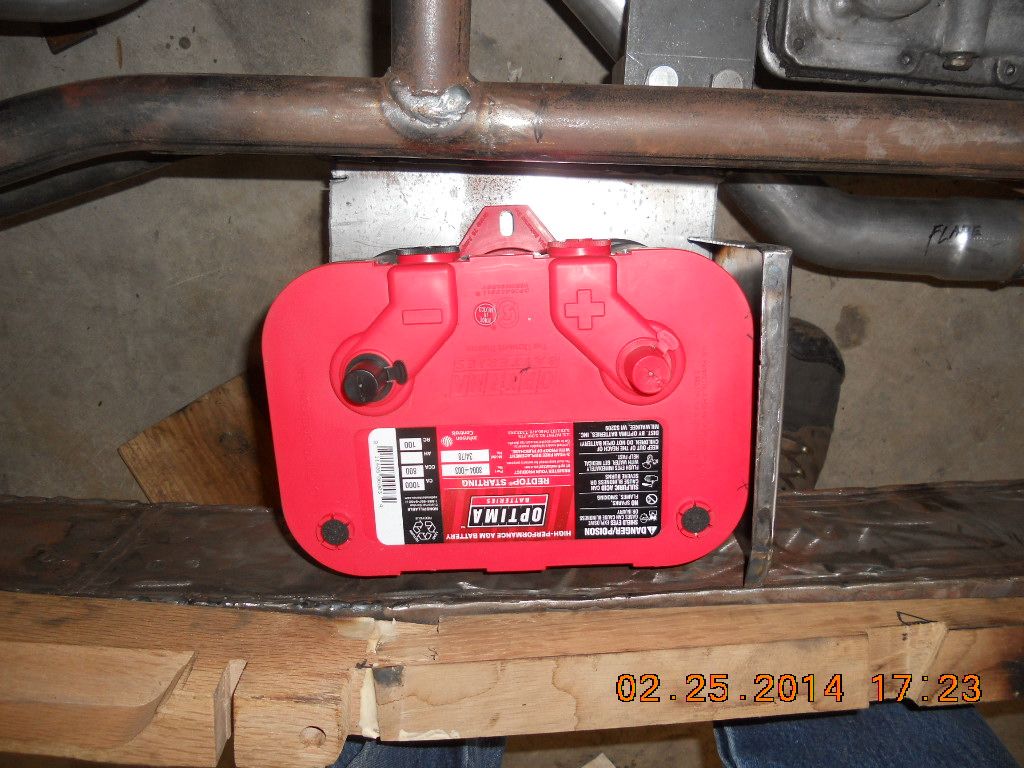Thread: 1940 Ford Pickup
-
02-12-2014 08:36 PM #361
30-40, Mike P and Jerry thanks for your reply's. PCV valve it will be.
Jerry: The reason I have the coolant hoses in the manifold is that the whole manifold set up was a gift from a close friend. Its supposed to aid in cooling the engine more evenly. If had to buy a manifold it'd be just a plain jane but I like gifts !
-
Advertising

- Google Adsense
- REGISTERED USERS DO NOT SEE THIS AD
-
02-22-2014 06:16 PM #362
-
02-23-2014 04:36 PM #363
-
02-23-2014 04:42 PM #364
I used Taylor's that had the plug boot fixed, distributor end cut-to-length. Mine were plenty long, and my routing was very similar to yours but dropped down below the headers with the group, and of course they went toward the correct end of the motor instead of being buried in the back....




Roger
Enjoy the little things in life, and you may look back one day and realize that they were really the BIG things.
-
02-23-2014 05:26 PM #365
That's a pretty loom set up.
I'd lean towards making your own so they'll be perfect.
Education is expensive. Keep that in mind, and you'll never be terribly upset when a project goes awry.
EG
-
02-23-2014 05:33 PM #366
Times 3... get a "universal" style et and do the cap end yourself, then you can make the length to what you need.
-
02-23-2014 10:33 PM #367
Just ordered a set of Taylor's, thanks for the input !
-
02-24-2014 06:01 AM #368
That set should come with a nifty plastic tool that's both an insulation cutting tool, to get the right amount of electrode exposed; and a crimping tool, to get the ends on just right.
A_Taylor Tool.jpg
If one doesn't come in the package you should pick one up because they make the job of installing ends an easy, repetitive task with good results. I think I've got two or three of them out in the shop if you don't get one and want to wait for snail mail.Roger
Enjoy the little things in life, and you may look back one day and realize that they were really the BIG things.
-
02-24-2014 06:53 AM #369
Dang thats a nifty tool.. I picked up a set of pliers made for the task ( also from Taylors ) but are a PITA! They are clumbsy and hard to use and rarely give a clean decent looking crimp!
-
02-24-2014 07:16 AM #370
Mike, I bought a separately packaged tool at the recommendation of the old counter guy at the performance shop, saying that I would be glad I had it after doing one wire, and then found that there was one packed in the box of the Taylor Universal wire set that I had purchased. The packaged one got hung on a nail to go back but never made the trip
The packaged one got hung on a nail to go back but never made the trip

The two pieces form a solid block about 1.5" square with ears on top to catch on the jaws of the vise. A nifty cutting guide is provided where you set the wire in place at your marked finished length and cut off the excess, leaving the right length "extra". Set the wire in place, then put a razor blade/knife at the "step" and rotate the wire, taking away the right length of insulation to leave a perfect, fully intact center conductor. Put the boot over the end, put the terminal in place, put the two halves of the block together and a turn or two on the vise handle makes a perfect crimp every time. Soooo much easier than anything I ever used before!!Roger
Enjoy the little things in life, and you may look back one day and realize that they were really the BIG things.
-
02-25-2014 05:56 AM #371
-
02-25-2014 06:08 PM #372
-
02-25-2014 06:27 PM #373
Will you have a removable panel in the floor for access? If so, does it interfere with the seat location? Since it's a dry cell battery you could mount it on it's side for easier access to the terminals if there's no hole in the floor. Sorta like the pic in post #299."It is not much good thinking of a thing unless you think it out." - H.G. Wells
-
02-25-2014 06:41 PM #374
-
02-28-2014 06:03 PM #375
Today I fired up my new engine. sbc 283 +.060. I set the timing a 10* as per the engine builders instructions prior to starting. It took a couple crankings to keep it running. Got it running steady @ 2000 rpm for the 1st 17 minutes and than ran out of gas. Got more gas and than started adjusting the carb using a vacuum gauge. Then I played with the timing using a t-light and ended up at 12* @ 900-1000 rpm with smooth running engine, vacuum advance disconnected. First video is the initial start up, 2nd is after I adjusted carb and timing.


inputs welcomeLast edited by Navy7797; 02-28-2014 at 06:14 PM.




 815Likes
815Likes

 LinkBack URL
LinkBack URL About LinkBacks
About LinkBacks Reply With Quote
Reply With Quote









I know this is a little early but, this site is down more than it's up, so...................... Here's hoping everybody has a great holiday season and my best wishes for a great and prosperous new...
Merry Christmas and Happy New year